- 60,000 contract/tender opportunities per year
- 4 Million UK Companies listed
- 12 million Director Names
- 100 million web pages indexed
Acer Ecology
Overview
- Mr Paul Hudson - Principal Ecologist
Products
Based in South Wales, Acer Ecology are leading ecological consultants, providing practical solutions that comply with wildlife legislation. Our surveys are performed by fully insured ecologists who are members of the Chartered Institute for Ecological and Environmental Management (CIEEM) and possess the appropriate licences from Natural Resources Wales or Natural England. Our ecologists collectively have several decades of experience, in areas such as nature conservation, ecological consultancy, academic research and local authorities.
The Acer Ecology team are licensed to deal with a variety of protected species, including dormice, bats, great crested newts, white-clawed crayfish and schedule one birds such as red kites and barn owls. We also ensure that our ecologists follow our health and safety, environmental and quality assurance policies.
Since our foundation, our workload has continually expanded, and we have formed a sound business foundation. We apply enthusiasm to our work and constantly strive to maintain our reputation for high quality services.
Our services include preliminary ecological appraisals, NVC surveys, hedgerow assessments and surveys, protected species surveys, specialist bat surveys, reptile surveys, tree surveys, European protected species licence applications, EcIAs, GIS capabilities, habitat creation and management plans, ecological training, wildlife interpretation and a variety of other surveys and services.
Badger Survey
The Protection of Badgers Act 1992 protects badgers and their setts from interference and harm. Development projects can often disrupt badgers, so a licence is necessary to perform work near active setts. Sett exclusion, closure and destruction also require a licence.Providing that badgers are not disturbed and setts are not damaged, many activities may be permitted. Such activities include vegetation clearance and work with hand tools or machinery, though vibration and noise levels must be kept at a tolerable level for badgers.
We can perform a variety of badger services, including badger surveys, badger licence application, bait marking and territory analysis, artificial sett design, sett closure supervision, badger fencing and tunnels.

Bat Survey
UK and European law consider it an offence to disturb, capture, injure or kill bats, or to interfere with their roosts.Bat surveys include two stages; one that can be performed at any time of year, and one that must be done when bats are occupying summer roost sites. The former involves determining if a building or tree is a potential bat roosting site, while the latter determines if bats are indeed emerging from or re-entering a structure.
We can perform a range of bat survey services, including initial scoping surveys, dusk emergence and dawn re-entry activity surveys, remote monitoring, roost construction, bat exclusions, roost enhancement and licence application.
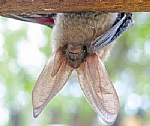
Bird Survey
UK law protects nearly all birds, their eggs and their nests, and provides enhanced protection to some particularly rare species during the breeding season. Since most development sites can potentially be home to nesting birds, which can impose seasonal constraints on site clearance, bird surveys are crucial.Our bird related services include winter bird surveys, common bird census (CBC), wetland bird surveys, moorland surveys, species specific surveys and vantage point surveys. Our ornithologists can also give advice on methodology, mitigation options, development work timing and legal protection.
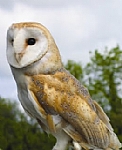
BREEAM / Code for Sustainable Homes Assessments
BREAAM and CSH are industry quality standards made to assess the environmental performance of buildings. BREEAM is used for buildings such as offices, schools, industrial buildings and multi-residential developments, while CSH is for new housing.Some BREEAM and CSH ecology credit points can only be awarded after a Suitability Qualified Ecologist (SQE) has done a site visit and produced a report. We can provide an SQE for this purpose, who will assess the site's ecological value, describe how the ecology could be retained/protected and how biodiversity could be enhanced after development.
We can also supply management plans to ensure that biodiversity measures are sustainable for a minimum of five years after development.
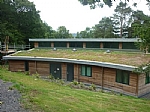
Dormouse Survey
Dormice are another type of animal that UK and European law protect from being killed, captured or disturbed.The three primary methods used to survey dormice are nest boxes, tube surveys and nut searches. Nest boxes and tube surveys involve placing boxes or tubes in dormouse habitats like woodland, hedgerows and shrubs, then waiting for dormice to take shelter there. These can take up to six months, from March to October. Nut searches involve identifying the distinct pattern that dormice leave when feeding on hazel nuts. While they can be done throughout the year, September and November yield the most reliable results.
Acer's dormouse specialists can undertake surveys, mitigation design and implementation, and licensing.
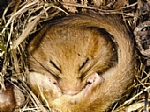
Great Crested Newt Survey
Frequently found on development sites, great crested newts are fully protected by UK and European law. Killing, capturing or disturbing great crested newts is an offence, as is damaging or destroying their ponds or the surrounding 500m of terrestrial habitat.Great crested newts occupy breeding ponds from mid-March to mid-June, so this is when surveying is best undertaken. Outside this season, terrestrial survey methods can be used to determine their presence in terrestrial habitats.
Our team includes great crested newt specialists who can provide surveying, mitigation design and implementation, and European Protected Species licensing. We frequently perform bottle-trapping, netting and torch surveys, egg-searching, drift-fencing and pitfall trap surveys for great crested newts.
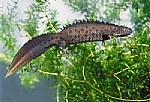
Otter Survey
UK and European law fully protect otters and their habitats, and developments that will affect otters require European Protected Species licences.Otter surveying can be performed all year round, though weather conditions and vegetation cover can present restrictions. Methods include recording otter signs (footprints, spraints, feeding areas, holts and resting areas) and assessing the suitability of the habitat to otter preferences.
Mitigation can include locating site compounds away from the otter habitat, avoiding using floodlights on the watercourse, excluding workers from certain areas, or creating artificial otter holts in areas that will be unaffected by the development.
The Acer team can undertake otter surveys and mitigation design and implementation, and can provide advice on licensing.

Ecological Impact Assessments
We are very experienced in the production of Environmental Impact Assessments (EIA) and can produce standalone Ecological Impact Assessments (EcIA) or Ecology chapters for larger Environmental Statements (ES).The Environmental Scoping Study is one of the first stages in an EIA, and it involves consulting statutory agencies to identify the key ecological issues and assure that the proposed methodologies are suitable.
During the process of creating an ES, we coordinate closely with other EIA team members to make sure that the design is coherent, effective mitigation solutions are provided, and the possible constraints and impacts are fully understood.

Habitat Management Plans
Be it for development sites or protected nature reserves, Acer Ecology can provide comprehensive habitat management plans for a range of situations. Our detailed management planning service covers baseline surveys and management plan preparation through to on-site implementation.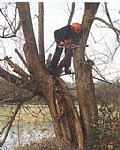
GIS Capabilities
Geographic Information Systems (GIS) provide accuracy and efficiency when mapping, monitoring and analysing geographical or spatial data. At Acer Ecology, we combine GIS technology with our ecological expertise to create accurate, high quality maps for the analysis of survey data.
Invertebrate & Insect Survey
UK law does not protect many insects and invertebrates, though several are classed as Biodiversity Action Plan (BAP) species, and these should be taken into account when planning developments.Depending on the habitat types, we may use a range of invertebrate and insect surveying techniques, including direct searching, beating, sweep netting, sieving, pitfall trapping, suction sampling, deadwood searching and light trapping. Fieldwork may then be followed by laboratory identification.
Our ecologists can perform terrestrial and aquatic invertebrate surveys, whether for development proposals or habitat management plans. They are also licensed to perform white-clawed crayfish surveys.
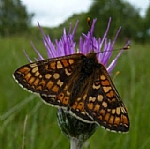
Tree Survey (BS5837)
Planning applications that could affect trees have to include a tree survey and report, detailing the potential impact that the development could have on trees on or around the site.The survey maps the locations of all significant trees and tree groups, as well as determining their size, condition and retention value. This information is then used to create a tree constraints plan, which details the extent of the canopy and the root protective distances necessary to assure the protection of the trees during development.
Our arboricultural services include tree risk assessment and safety management, tree conditions inspections, woodland management plans, tree health and safety reports, Tree Preservation Order advice, tree ill health and disease diagnosis, planting scheme design, application advice, arboricultural impact studies/method statements and more.
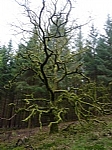
Landscape Architecture
We work with a landscape architectural practice who can provide a range of landscape architecture services, from the initial planning all the way through to maintenance and aftercare.Services include site surveys, appraisals and analysis, master planning, feasibility studies and opportunities and constraints mapping, landscape design, landscape and visual impact assessment, planting plans, environmental co-ordination, maintenance and management, character assessment, landscape strategies, and historic landscape assessment.

Habitat Survey
The most common ecological service that we provide is the Extended Phase 1 Habitat survey, which involves constructing colour coded habitat maps that display the distribution and extent of habitat types present on a site.This survey identifies habitats on the site that could hinder development and evaluates their potential to support protected species. If a site is judged to have low wildlife significance, then no further survey may be necessary.
Other names by which Extended Phase 1 Habitat Surveys are known include Baseline Ecological Survey, Preliminary Ecological Appraisal, Phase 1 Survey, Ecological Site Assessment, Ecological Scoping Survey, Ecological Constraints Survey and Ecological Site Appraisal.
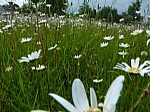
Reptile Survey
Britain is home to four widespread species of reptile that are often found on development sites; the grass snake, adder, slow-worm and common lizard. These species have 'partial protection' under UK law, which means that it is illegal to deliberately kill or injure them, though their habitats are not specifically protected.Reptile surveying consists of visual searches and use of artificial refugia, and is most effective between April and September, as reptiles are unlikely to be hibernating then.
Acer's ecologists have a wealth of experience in reptile surveying and mitigation design, and can provide advice on survey methodology, mitigation options, development work timing and legal protection.
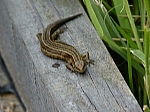
Site Supervision
If you need input during the construction stages of your development, Acer Ecology can provide on-site ecological supervision – designing and supervising ecological mitigation and compensation works to assure that you can minimise your ecological impact.Recent supervision projects have included hedgerow translocation, vegetation clearance and building demolition and refurbishment.
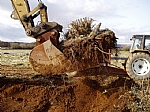
Details
Info
| Registration Number: | 07563601 |
| VAT Number: | n/a |
| Registered at Companies House: | 15 March, 2011 (13 years and 1 month ago) |
| No of Employees: | 1-10 |
| Annual Turnover: | n/a |
| Importers: | |
| Exporters: |
Opening Times
| Monday | 09:00 AM - 05:30 PM |
| Tuesday | 09:00 AM - 05:30 PM |
| Wednesday | 09:00 AM - 05:30 PM |
| Thursday | 09:00 AM - 05:30 PM |
| Friday | 09:00 AM - 05:30 PM |
| Saturday | Closed |
| Sunday | Closed |
Questions
Additional Information
Gallery
Financial Information
To view more detailed financial information for this company click here.
- Infrared Application Engineers
- NJP BROKERS Ltd
- Cliff Brothers Ltd
- Mortgages of Choice Ltd
- Lightbulb Moment (UK) Ltd
- Kids Beds Ltd
- DAVINA COMMUNICATIONS Ltd
- Compressor Couplings
- Walton Pre-school
- Overprint Packaging Ltd
- Caleb Decorators Ltd
- Postcodes beginning with TR
- Paving Blocks
- Access Doors
- Cab Care Uk Ltd
- Sieson Ltd
- Toastea Ltd
- Warehouse Equipment
- Time Marking & Coding Machines







